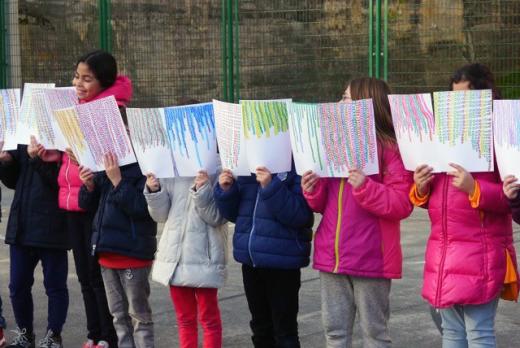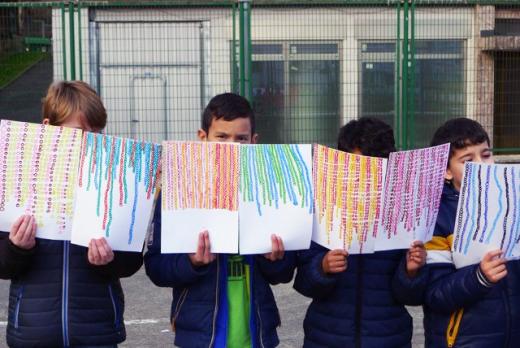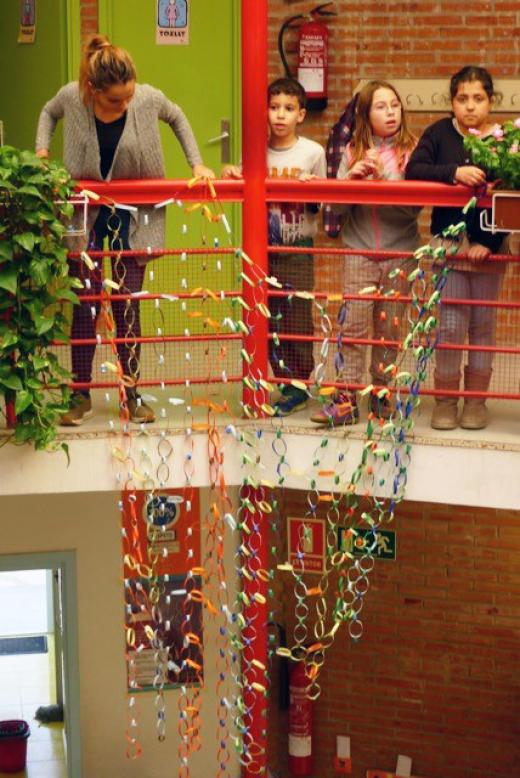HUMAN CHAIN
Artist: Maider López
Class: 3rd and 4th grade students
Related themes: Economic sectors and professions
Mediums: Sculpture, photography, and performance
Teacher: Carmen Movilla
Mendiola School, Donostia-San Sebastián
Materials: Scissors, glue, foam rubber, and video camera
How can something as mechanical as assembly-line work be related to art? Art there meeting points? The students from Mendiola found them and used performances based on the assembly line, to develop a series of fun artistic projects related to the study of jobs, professions, and industrial processes with art and creation.
16 third and fourth grade students and artist, Maider López asked themselves: What are the work sectors? How can we relate this curricular topic to art? The objective of the workshops was the understanding of the primary, secondary, and tertiary sectors, as well as the appreciation of the possibilities of chain working. Other objectives of the project were to foster the capacity of expression in Basque and implement cooperation as a work method, learning to share and help through group and cooperative work.
The students created different types of fruit by cutting up foam, which they chain transported from one end of the school to the other: standing in a line, they passed the material to each other through the school, crossing the playground, corridors, and stairs until reaching the classroom.
The school’s architecture, a hexagonal-shaped building with a central playground, enabled the students to use the large net that they hung on the interior balcony as a curtain for the playground. It is a school on a children’s scale with a community space through the playground. Its use was debated as a group. This net, which was made out of colored cardboard, is reminiscent of those of fishermen, symbol of the economy’s primary sector. In the same way, each small ring builds an essential part of the large curtain hanging from the balcony.



